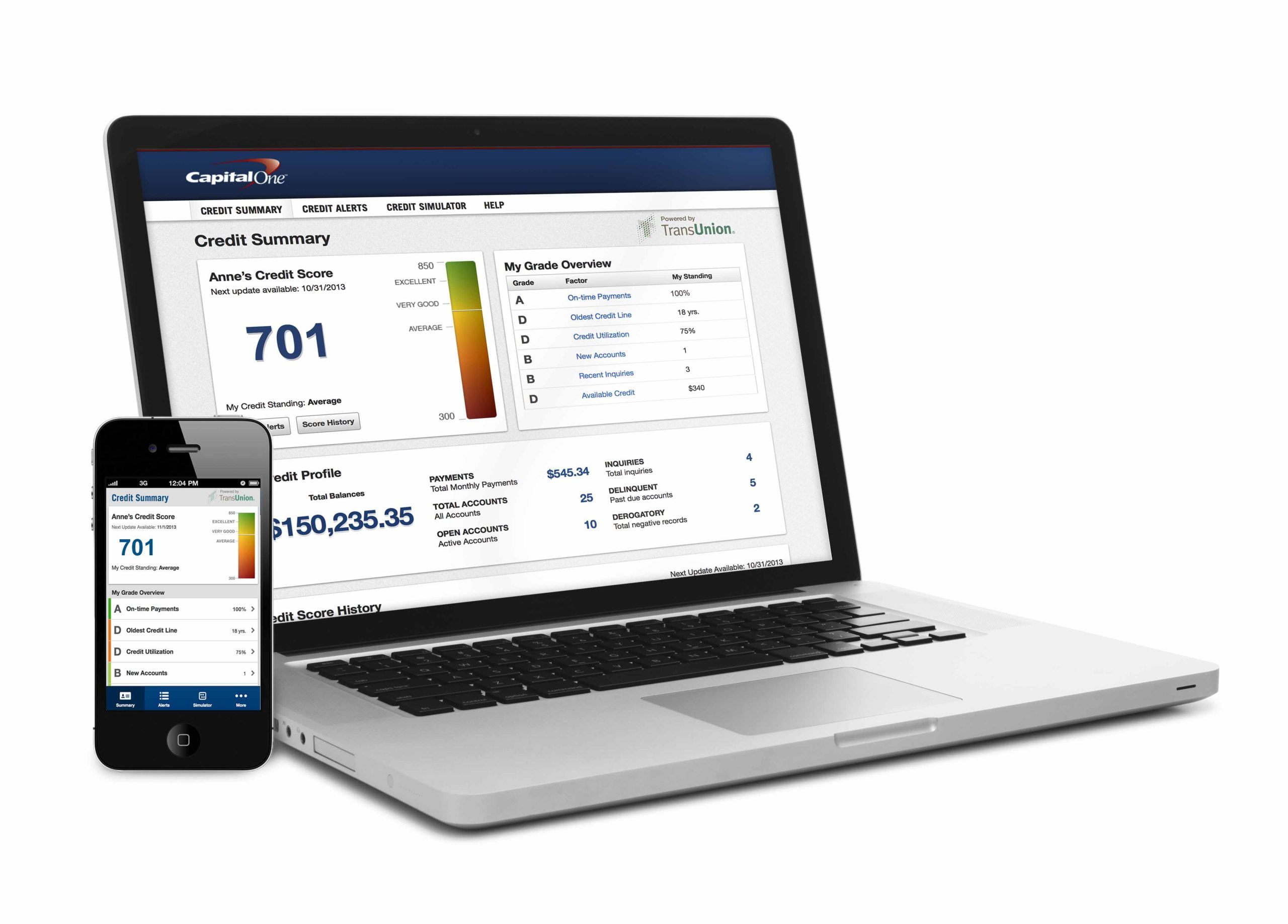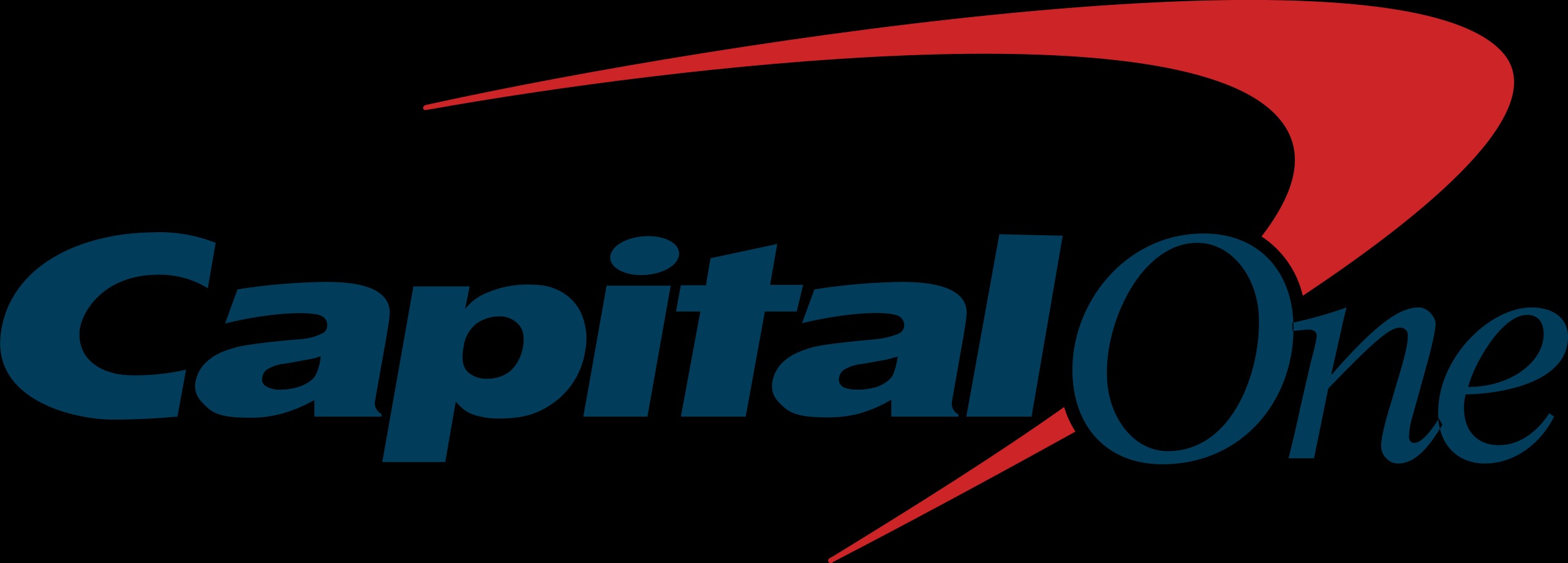Home>Finance>How Long Does Capital One Take To Update Available Credit


Finance
How Long Does Capital One Take To Update Available Credit
Modified: February 21, 2024
Want to know how long it takes for Capital One to update your available credit? Discover the answer and more on finance-related topics.
(Many of the links in this article redirect to a specific reviewed product. Your purchase of these products through affiliate links helps to generate commission for LiveWell, at no extra cost. Learn more)
Table of Contents
Overview
Capital One is a well-known financial institution that offers a wide range of credit cards to individuals and businesses. One common question that often arises is how long it takes for Capital One to update the available credit on their credit cards. Understanding the time frame for credit updates can help cardholders better manage their spending and reduce confusion about their available credit.
The update time for available credit on Capital One credit cards can vary depending on several factors. These factors include the credit reporting process, the method of payment, and potential delays that may occur during the update process. By understanding these factors, cardholders can have a clearer understanding of when their available credit will be updated, ensuring efficient financial planning and decision-making.
In this article, we will explore the factors that can affect the update time for available credit on Capital One credit cards. We will also provide insights into the typical time frame for credit updates and explain the credit reporting process. Additionally, we will address common delays in updating available credit and offer some tips on how to expedite the credit update process.
Whether you are a frequent Capital One credit card user or considering opening a new account, understanding how long it takes for available credit to be updated is crucial for managing your finances effectively. Let’s dive into the factors influencing credit updates and gain a better understanding of the process.
Factors Affecting Capital One’s Credit Update Time
Several factors can impact the time it takes for Capital One to update the available credit on their credit cards. By understanding these factors, cardholders can better manage their finances and avoid any potential confusion regarding their credit limits. Here are the key factors that can affect the credit update time:
- Payment Method: The method of payment used to make a payment towards the credit card balance can impact the credit update time. Payments made through electronic methods such as online banking or mobile apps tend to be processed faster compared to payments made through traditional methods such as checks.
- Credit Reporting Process: Capital One follows the standard credit reporting process, which involves transmitting data to credit bureaus at regular intervals. The credit bureaus then update the information on the cardholder’s credit report, including the available credit. The timing of these updates can vary depending on the reporting cycle of both Capital One and the credit bureaus.
- Day and Time of Payment: The day and time a payment is made can also affect the credit update time. Payments made during business hours, especially on weekdays, are more likely to be processed and reflected in the available credit sooner compared to payments made outside of business hours or on weekends.
- Processing Delays: Occasionally, there may be delays in the processing of payments or in the communication between Capital One and the credit bureaus. These delays can be attributed to technical issues, system updates, or higher volumes of transactions at certain times.
- Payment Clearing Time: The time it takes for a payment to clear can impact the update time for available credit. Different payment methods have different clearing times, and it is important to consider this when expecting the credit to be updated. Some payment methods, such as electronic funds transfers, may clear within a few hours, while others, such as checks, may take several days.
It is important to note that while Capital One strives to update credit information promptly, there may be factors beyond their control that can lead to delays in updating available credit. However, understanding these factors can help cardholders anticipate when their credit will be updated and plan their finances accordingly.
Typical Timeframe for Credit Updates
The timeframe for credit updates on Capital One credit cards can vary depending on several factors. While there is no definitive answer to how long it takes for available credit to be updated, the process typically follows a general timeline. It is important to keep in mind that these timeframes are approximate, and individual experiences may vary. Here is a typical timeframe for credit updates on Capital One credit cards:
- Immediate Updates: In some cases, credit updates can be immediate, especially for payments made through electronic methods like online banking or mobile apps. Once the payment is processed, the available credit may be updated almost instantly.
- Same Day Updates: For payments made during business hours on weekdays, the available credit may be updated on the same day. This is especially true for electronic payments, as they tend to be processed and reflected in the available credit faster.
- Next Business Day Updates: Payments made during non-business hours or on weekends may take slightly longer to process. In such cases, the available credit may be updated on the next business day. This is because payment processing and credit reporting activities are generally not conducted outside of business hours.
- Reporting Cycle Updates: Capital One follows a reporting cycle to transmit credit data to the credit bureaus. The frequency of these updates can vary but is typically on a monthly basis. During the reporting cycle, the credit information, including the available credit, is updated on the cardholder’s credit report.
- Processing Delays: As mentioned earlier, processing delays can occur due to various factors. These delays can extend the timeframe for credit updates. It is important to factor in these potential delays when expecting the available credit to be updated.
It is important to note that the timeframe for credit updates can be influenced by factors beyond the control of Capital One, such as the credit reporting process and potential delays in payment processing. To ensure accurate and up-to-date information, cardholders are encouraged to regularly monitor their credit card accounts and verify the available credit before making any significant purchases.
By understanding the typical timeframe for credit updates, cardholders can effectively plan their finances, avoid exceeding their credit limits, and make informed decisions about their spending.
Understanding the Credit Reporting Process
The credit reporting process is an essential component of how credit updates are reflected on Capital One credit cards. It involves the transmission of credit data between Capital One and the credit bureaus, which ultimately determines the available credit shown to cardholders. Understanding this process can provide valuable insights into how credit updates are managed. Here’s an overview of the credit reporting process:
1. Data Transmission: Capital One regularly transmits credit data to the major credit bureaus, including information about credit limits, balances, and payment history. This data is used by the credit bureaus to update the credit reports of cardholders.
2. Reporting Cycle: Capital One follows a reporting cycle to send credit data to the credit bureaus. The specific frequency of these updates can vary, but it is typically on a monthly basis. This means that the available credit may not be immediately updated after a payment is made or a credit limit is changed.
3. Credit Bureau Processing: Once the credit bureaus receive the credit data from Capital One, they process and update the information on the cardholder’s credit report. This includes updating the available credit based on the reported credit limit and balance information.
4. Timelines for Updates: The exact timing of when the credit bureaus update the available credit can vary based on the reporting cycle, the workload of the credit bureaus, and other factors. This is why the available credit may not reflect immediate changes or payments made on the credit card.
5. Credit Report Access: Cardholders can access their credit reports from the credit bureaus to review their available credit and ensure the accuracy of the information. It is advisable to regularly check the credit report to monitor any discrepancies and report them promptly to Capital One and the credit bureaus.
It is important to note that while Capital One strives to provide accurate and timely credit updates, there may be slight delays in the credit reporting process. These delays can be influenced by factors such as the reporting cycle, communication between Capital One and the credit bureaus, and potential processing delays at either end. Overall, understanding the credit reporting process can help cardholders better manage their finances and set realistic expectations for credit updates on their Capital One credit cards.
Common Delays in Updating Available Credit
While Capital One strives to update available credit in a timely manner, there are several common delays that can occur in the process. These delays can affect the accuracy of the available credit displayed on the credit card and may cause confusion for cardholders. Here are some of the common delays in updating available credit:
- Processing Time: It takes time for the payment to be processed and applied to the credit card account. Depending on the method of payment and the processing systems in place, this process can vary in duration. Payments made through electronic methods, like online banking or mobile apps, tend to be processed faster compared to traditional methods like checks.
- Payment Clearing Time: Even after the payment is processed and applied to the credit card account, there may be a clearing time associated with the payment. Different payment methods have different clearing times. For example, electronic funds transfers may clear within a few hours, while checks may take several days to clear.
- Credit Bureau Reporting Cycle: Capital One follows a reporting cycle to transmit credit data to the credit bureaus. If a payment is made or a credit limit is changed shortly before a reporting cycle, the available credit may not be immediately updated in the credit reports. Cardholders may need to wait until the next reporting cycle for the updated information to reflect in their credit reports.
- Communication Delays: There can be delays in the communication between Capital One and the credit bureaus, which may affect the timely update of available credit. Technical issues, system updates, or a higher volume of transactions can contribute to these communication delays.
- Weekend and Holiday Processing: Payments made on weekends or holidays may experience delays in processing and updating the available credit. This is because payment processing and credit reporting activities are generally not conducted outside of business hours.
It’s essential for cardholders to be aware of these common delays and to consider them when expecting the available credit to be updated. To avoid any confusion or potential overspending, it is recommended to regularly check the credit card account and verify the available credit before making significant purchases.
If cardholders notice a significant delay in the update of their available credit or suspect any inaccuracies, it is crucial to contact Capital One’s customer service for assistance. They can provide clarification, investigate any issues, and help resolve any discrepancies that may arise.
By understanding the common delays in updating available credit, cardholders can better manage their finances and make informed decisions about their spending based on the most up-to-date information.
Tips to Expedite Credit Updates
While the timing of credit updates ultimately depends on various factors outside of individual control, there are some tips that can help expedite the process. By following these tips, cardholders can potentially see faster updates to their available credit on Capital One credit cards. Here are some suggestions:
- Make Electronic Payments: Opt for electronic payment methods, such as online banking or mobile apps, when making credit card payments. Electronic payments tend to be processed faster compared to traditional methods like mailing a check.
- Make Payments in Advance: To ensure timely processing, make credit card payments in advance of the due date. This allows for any potential delays in processing and gives ample time for the payment to be reflected in the available credit.
- Be Mindful of Reporting Cycles: Pay attention to the reporting cycle of Capital One and the credit bureaus. If you need an immediate update to your available credit, consider making your payment before the next reporting cycle to increase the chances of a faster update.
- Follow Up with Customer Service: If you believe there has been a delay in updating your available credit, or if you notice any inaccuracies, contact Capital One’s customer service. They can provide assistance, investigate any issues, and help resolve any discrepancies.
- Monitor Your Credit Report: Regularly monitor your credit report from the major credit bureaus. This allows you to verify the accuracy of the reported credit information and identify any potential discrepancies or delays in updating the available credit.
- Track Payment Clearing Time: Keep track of the clearing time associated with different payment methods. Understanding how long it takes for a payment to clear can help you anticipate when the available credit will be updated.
It’s important to note that while these tips can potentially expedite credit updates, there may still be external factors that can cause delays. It is advisable to plan your finances and make important decisions based on the current available credit while keeping these factors in mind.
By implementing these tips and being proactive in managing your credit card payments, you can increase the likelihood of faster updates to your available credit. Remember, staying informed and regularly checking your credit card account will help you maintain accurate and up-to-date information about your credit limit and available credit.
Frequently Asked Questions (FAQs)
Here are some frequently asked questions about Capital One credit card credit updates:
-
How long does it typically take for Capital One to update available credit?
The timeframe for credit updates on Capital One credit cards can vary. Immediate updates can occur for payments made through electronic methods, while same-day updates are common for payments made during business hours. Updates may also occur within the next business day, while reporting cycle updates happen on a monthly basis.
-
What factors can cause delays in updating available credit?
Delays can occur due to the time it takes for payments to be processed and cleared, the credit reporting cycle, communication delays between Capital One and the credit bureaus, as well as processing delays at both ends. Weekends, holidays, and non-business hours can also contribute to delays.
-
Can I expedite the credit update process?
While you cannot control every aspect of the credit update process, there are tips that can potentially expedite updates. Making electronic payments, paying in advance, keeping track of reporting cycles, following up with customer service, monitoring credit reports, and understanding payment clearing times are ways to potentially speed up the process.
-
What should I do if I notice a delay in the update of my available credit?
If you notice a significant delay in updating your available credit or suspect any inaccuracies, it is important to contact Capital One’s customer service. They can provide assistance, investigate the issue, and help resolve any discrepancies that may arise.
-
Why is it important to monitor credit reports?
Regularly monitoring your credit report from the major credit bureaus allows you to verify the accuracy of the reported credit information. It also helps you identify any potential discrepancies or delays in updating the available credit and enables you to take appropriate actions if necessary.
Remember that individual experiences may vary, and it is essential to stay informed and proactive when managing your finances and credit card payments. If you have specific concerns or questions about your Capital One credit card credit updates, it is always best to reach out to their customer service for personalized assistance.














